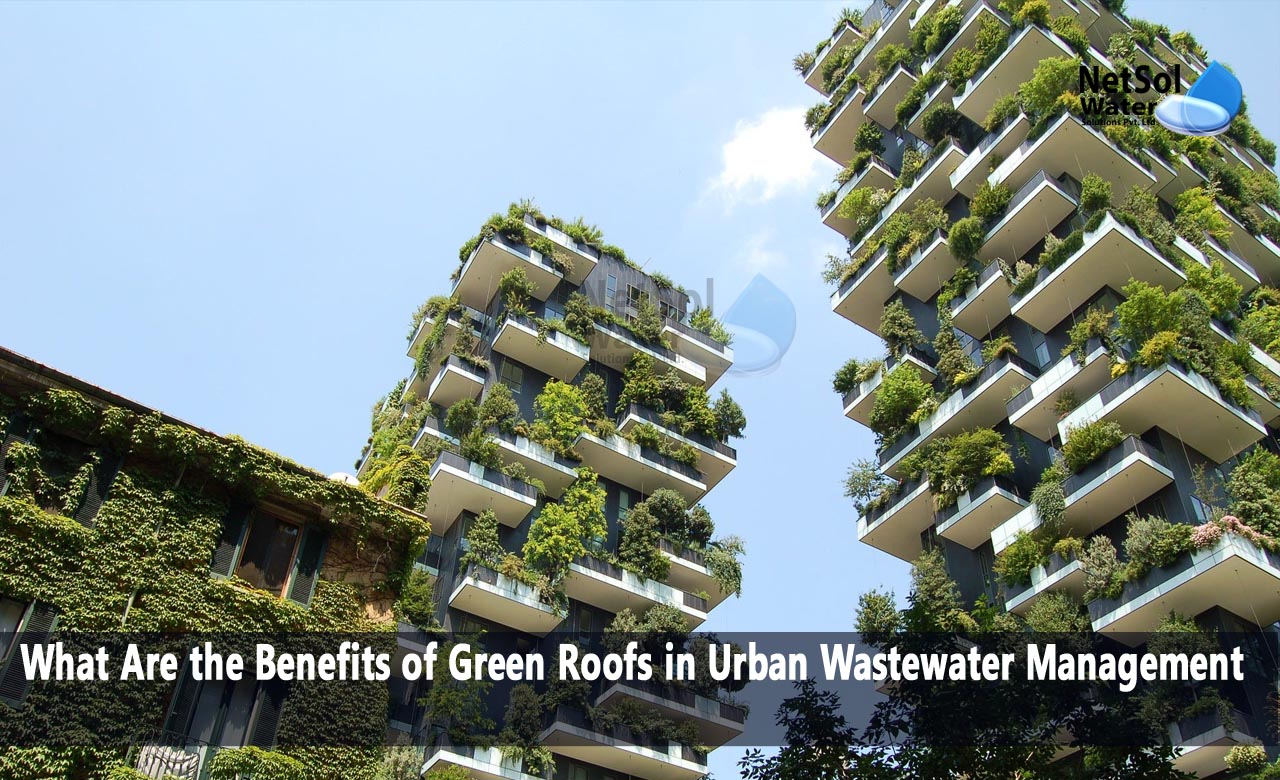What Are the Benefits of Green Roofs in Urban Wastewater Management?
With increased urbanization comes the difficulty of managing rainwater and wastewater in densely populated regions. Customary urban foundation neglects to stay aware of rising interest, bringing about issues like floods, contamination, and overburdened sewage frameworks. Green rooftops, otherwise called vegetated or living rooftops, have developed as a drawn out answer for these issues. In this blog, we will check out at the many benefits of green rooftops in urban wastewater treatment.
Stormwater Retention
The capacity of green roofs in urban settings to retain runoff is one of its key advantages. Green roofs absorb rainfall through the soil and plants, functioning as a sponge, rather than allowing it to run off impermeable surfaces such as concrete and asphalt. This minimizes the amount of stormwater entering sewage systems, lowering the danger of overflows during heavy rain events and, eventually, minimizing urban floods.
Stormwater Runoff Reduction
Green roofs considerably reduce stormwater runoff, which is a major source of urban pollution. Pollutants such as heavy metals, oil, and chemicals are frequently carried into local water bodies via runoff from impermeable surfaces, creating pollution. By retaining and gradually releasing rainwater, green roofs act as a natural filter, trapping and purifying pollutants and preventing them from entering the urban water system.
Water Quality Improvement
Green roof vegetation not only minimizes runoff but also plays an important role in enhancing water quality. Rainwater undergoes natural cleansing when it is absorbed and transpired by plants. This results in cleaner water that may be utilized for non-potable applications like irrigation or cooling, reducing the demand for freshwater resources.
Urban Heat Island Effect Mitigation
Urban heat islands are defined by greater temperatures in urban regions compared to rural areas. Green roofs offer an excellent way to address this issue. Green roof flora and soil help cool the surrounding air through evapotranspiration, lowering the overall heat load in urban settings. This cooling effect not only makes cities more comfortable but also reduces the energy consumption needed for air conditioning, which, in turn, lowers greenhouse gas emissions.
Enhanced Aesthetics and Green Spaces
Green roofs improve urban aesthetics by providing lush flora to otherwise concrete-dominated surroundings. This not only improves a city's outward attractiveness but also offers citizens with green places for rest, entertainment, and even urban agriculture. Green roofs have the potential to improve the overall quality of life in urban areas.
Promotion of Biodiversity
Green rooftops are aurban shelter for biodiversity. They are home to a great many plants, bugs, birds, and different species. This miniature climate can help pollinators and incrementurban biodiversity, the two of which are significant for biological system wellbeing and strength.
Energy Efficiency
Green roofs assist to increase building energy efficiency. They reduce energy usage for cooling in the summer and heating in the winter by adding an extra layer of insulation and limiting heat gain. This saves building owners money and lessens the demand on power plants, which benefits water resources indirectly by lowering energy-related water use.
Increasing the Lifespan of a Roof
A green roof can help to extend the life of the underlying roof structure. The flora and soil operate as a barrier, protecting the roof membrane from UV rays, temperature variations, and mechanical damage. This may greatly reduce maintenance costs and the frequency of roof repairs, contributing to more environmentally friendly construction practices.
Air Quality Improvement
Green roofs also help to enhance air quality in cities. They collect airborne pollutants and dust particles, lowering pollution levels. Green roof vegetation filters and purifies the air, resulting in a healthier and more pleasant urban environment.
Climate Change Resilience
Green roofs become an important tool for adaptation as cities face the difficulties of climate change, including more frequent and powerful rainfall events. Because of their capacity to absorb and retain rainwater, cities are more robust to shifting weather patterns.
Conclusion:
Green rooftops have demonstrated to be a flexible answer for a considerable lot of the urban wastewater the board gives that have emerged because of developing urbanization. They are a crucial resource for contemporary networks because of their capacity to ingest water, decrease spillover, improve water quality, and reduce the urban intensity island impact. Besides, the tasteful, ecological, and monetary advantages they give assistance to make urban communities more feasible and strong. As urban areas extend, the utilization of green rooftops ought to be elevated to advance supportable urban development and successful wastewater treatment.
Netsol Water is Greater Noida-based leading water & wastewater treatment plant manufacturer. We are industry's most demanding company based on client review and work quality. We are known as best commercial RO plant manufacturers, industrial RO plant manufacturer, sewage treatment plant manufacturer, Water Softener Plant Manufacturers and effluent treatment plant manufacturers. Apart from this 24x7 customer support is our USP. Call on +91-9650608473, or write us at enquiry@netsolwater.com for any support, inquiry or product-purchase related query.



